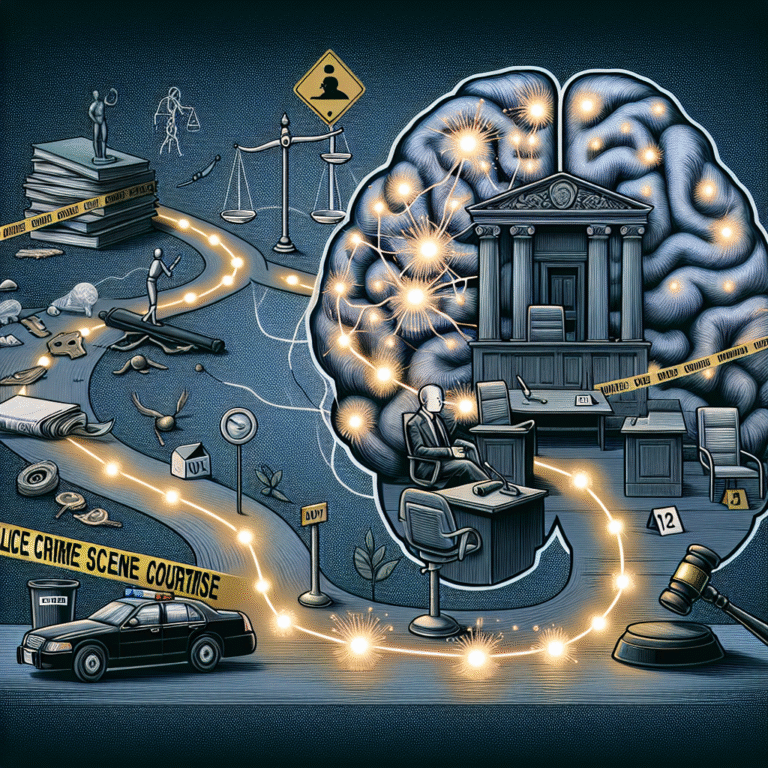
Introduction
Imagine being in a dimly lit room, a single table separating you from a law enforcement officer who is determined to uncover the truth. The air is thick with tension, and every word spoken is a dance of strategy and psychology. Welcome to the world "Inside the Interrogation Room: Real-Life Stories and Techniques from Law Enforcement." This unique environment is a theater of the human psyche, where skilled interrogators blend science and art to elicit confessions or gather vital information.
In this article, we’ll delve into the methods used by law enforcement, sharing compelling real-life stories that illuminate the complexities of interrogation. From psychological tactics to ethical dilemmas, we’ll explore how understanding these techniques can enhance not only our knowledge of law enforcement practices but also provide insights into human behavior.
The Art and Science of Interrogation
Understanding the Goals of Interrogation
When we think about interrogation, the first image that often comes to mind is a high-stakes scene akin to what we’ve seen in movies. However, real-life interrogations have specific objectives, including:
- Eliciting confessions from suspects
- Gathering accurate information
- Establishing rapport
- Ensuring the psychological well-being of both parties
Types of Interrogation Techniques
1. The Reid Technique
One of the most widely used methods in law enforcement is the Reid Technique. Developed in the 1950s, this technique employs psychological manipulation to elicit confessions. It consists of nine steps, including:
- Direct Eye Contact: This is aimed at establishing authority.
- Deception and Fabrication: Suggesting evidence that doesn’t exist to induce a confession.
- Promising Leniency: Offering leniency in exchange for cooperation.
Case Study: The False Confession of Johnresthe M.
In a high-profile case in the late 1990s, Johnresthe M. was wrongfully convicted based on a confession obtained through the Reid Technique. Law enforcement fabricated evidence against him, leading to a confession driven by fear rather than truth, showcasing the potential ethical pitfalls of this method.
2. The PEACE Model
An alternative to the Reid Technique is the PEACE Model, particularly popular in the UK. PEACE stands for Preparation, Engage, Account, Closure, and Evaluate. Unlike its predecessor, this approach emphasizes open dialogue rather than coercion.
Case Study: UK Police and the PEACE Model
A notable case involved a suspect in a robbery who was initially reluctant to share details. Utilizing the PEACE approach, investigators built rapport, leading the suspect to provide key details about the crime, resulting in a successful conviction without the need for any coercive tactics.
Table: Comparison of Interrogation Techniques
| Technique | Focus | Strengths | Weaknesses |
|---|---|---|---|
| Reid Technique | Psychological manipulation | High confession rate | Risk of false confessions |
| PEACE Model | Building rapport and open dialogue | Promotes ethical interactions and truth | May require more time |
The Role of Body Language
Reading Non-Verbal Cues
The interrogation room is not just about words; body language plays a crucial role in gauging a suspect’s truthfulness or deceit. Here are some common indicators:
- Micro-expressions: Brief flashes of emotion that reveal true feelings.
- Posture: Closed-off or defensive stances may signify discomfort with the topic.
- Eye Movement: Averting eye contact could indicate dishonesty.
Analytical Case Study: The Body Language of a Criminal
In a robbery case, an investigator noticed the suspect’s fidgeting hands and rapid eye movement when questioned about specific details. This non-verbal behavior led the officer to change tactics, pivoting to relaxed conversation, ultimately leading to a confession.
Ethical Dilemmas in Interrogation
The Balancing Act
As we delve "Inside the Interrogation Room: Real-Life Stories and Techniques from Law Enforcement," an essential aspect to consider is the ethical challenges faced by interrogators. The line between effective interrogation and manipulation can become blurred, raising crucial questions about morality and legality.
- Coercive Tactics: What happens when pressure techniques violate a suspect’s rights?
- False Confessions: How can officers ensure that confessions are both ethical and legitimate?
A notable case involved a detective facing public backlash after using manipulative tactics that led to a false confession, which was then recanted in court. The incident prompted a reevaluation of interrogation practices within the department.
Techniques for Building Rapport
The Importance of Trust
To elicit truthful information, building rapport is vital. Law enforcement agencies often utilize several techniques:
- Active Listening: Engaging fully with the suspect’s narrative to make them feel heard.
- Common Ground: Finding shared experiences to create a connection.
- Empathy: Demonstrating understanding of the suspect’s feelings and circumstances.
Case Study: A Turnaround Through Empathy
In a theft case, an officer employed empathy by acknowledging a suspect’s difficult life situation. This approach shifted the tone of the conversation and encouraged the suspect to open up, resulting in valuable information about the crime and others involved.
The Power of Storytelling
Using Narrative to Elicit Responses
Storytelling is a tapestry woven into the fabric of human communication. During interrogations, officers often share stories—real or fabricated—to elicit emotions or thoughts from suspects. By relating similar experiences, investigators can steer the conversation toward more productive paths.
Case Study: The Power of Parallels
An officer faced a suspect resistant to divulging information. By recounting a relatable anecdote from their own life, the officer was able to mirror the suspect’s emotions, leading to a breakthrough in communication and subsequent confession.
Data-Driven Approaches in Interrogation
Leveraging Technology and Psychology
Modern interrogation techniques are increasingly backed by data. Statistical analyses can help identify patterns and probable outcomes based on past experiences. For example, psychological profiling based on an individual’s behavior can revealingly point toward likely responses in interrogative scenarios.
Insights from Behavioral Analysis
A case study of a series of confessions via statistical profiling revealed that specific personality types in suspects often reacted positively to particular interrogation approaches. Consequently, law enforcement adjusted training programs to better align with these findings.
Conclusion
Stepping "Inside the Interrogation Room: Real-Life Stories and Techniques from Law Enforcement" provides a nuanced understanding not only of interrogation but of human behavior itself. As we have seen, strategies like the Reid Technique and the PEACE Model, combined with the nuanced art of rapport-building and storytelling, illustrate the delicate balance that must be maintained in achieving truth and justice.
An Inspirational Takeaway
The interrogation room serves as a microcosm for human interaction, revealing the depths of motivation and fear. As we contemplate the complexities of morality, ethics, and the human condition, we are reminded of the profound responsibility held by those in law enforcement. Learning from these stories and techniques empowers us to approach interactions in our daily lives more thoughtfully and with greater empathy.
FAQs
1. What is the Reid Technique, and how does it work?
The Reid Technique is a widely used method in interrogation focusing on psychological manipulation to elicit confessions through direct questioning and deception.
2. What are the ethical considerations in interrogation?
Interrogators must balance effective techniques with respect for suspects’ rights, ensuring no coercion or manipulation leads to false confessions.
3. How important is body language in interviews?
Body language provides crucial insights into a suspect’s mental state and potential sincerity, making it an invaluable part of the interrogation process.
4. Why is rapport-building essential during interrogations?
Building rapport fosters a safe environment where suspects feel comfortable sharing truthful information, significantly influencing the outcome.
5. Can storytelling be an effective interrogation technique?
Yes, storytelling can create emotional connections and disarm suspects, facilitating a more open exchange of information.
This in-depth exploration guides readers through the intricacies of interrogation, blending practical techniques and engaging narratives to cultivate a deeper understanding of this compelling aspect of law enforcement.
















